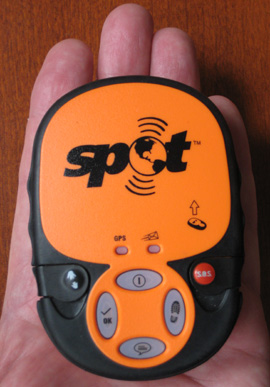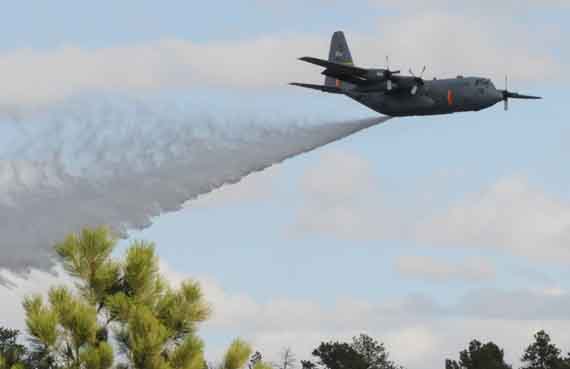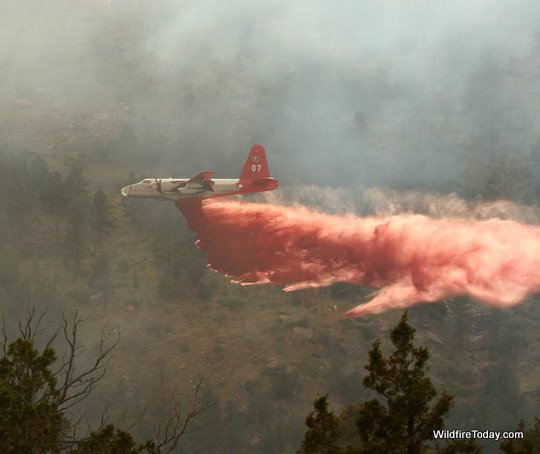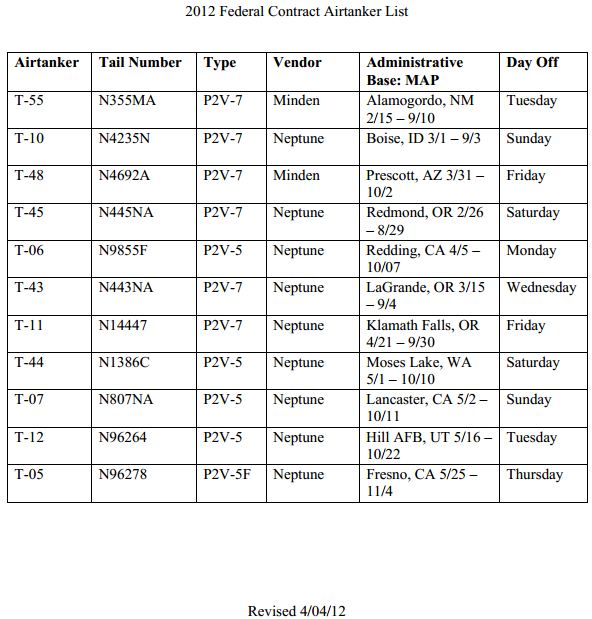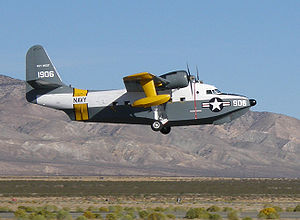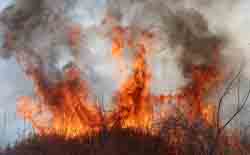 On April 20 Wildfire Today covered the jury verdict following a trial that awarded $730,000 to the owners of a Montana ranch, part of which burned in the Ryan Gulch wildfire in 2000 during a period that saw numerous fires burning across the state. The heart of Fred and Joan Weaver’s case was their contention that firefighters used poor judgement in selecting and implementing an indirect strategy of backfiring, rather than constructing direct fireline on the edge of the fire. In the process, they argued, more land burned than was necessary, including 900 acres of their ranch. The jury decided that of the monetary award, $150,000 was for the loss of timber, $200,000 was for the rehabilitation of pasture land, and $350,000 was to compensate them for the mental suffering and anguish of seeing their ranch threatened by the fire.
On April 20 Wildfire Today covered the jury verdict following a trial that awarded $730,000 to the owners of a Montana ranch, part of which burned in the Ryan Gulch wildfire in 2000 during a period that saw numerous fires burning across the state. The heart of Fred and Joan Weaver’s case was their contention that firefighters used poor judgement in selecting and implementing an indirect strategy of backfiring, rather than constructing direct fireline on the edge of the fire. In the process, they argued, more land burned than was necessary, including 900 acres of their ranch. The jury decided that of the monetary award, $150,000 was for the loss of timber, $200,000 was for the rehabilitation of pasture land, and $350,000 was to compensate them for the mental suffering and anguish of seeing their ranch threatened by the fire.
In the 18 hours since we posted the article, seven comments have been left by our readers, including two from the Weaver’s attorney, Quentin Rhoades. Mr. Rhoades is not your typical barrister. He worked as a wildland firefighter for eight seasons between 1987 and 1994, serving on the Helena Hotshot crew and later as a smokejumper at West Yellowstone and Missoula. He told Wildfire Today that he was in the first planeload of jumpers on the South Canyon fire in Colorado in 1994, the fatal fire on which 14 wildland firefighters were entrapped and killed.
The Ryan Gulch fire was managed by a Type 1 Interagency Incident Management Team from the southeast, the “Red Team”, with Mike Melton as Incident Commander working under a delegation of authority from the state of Montana.
The list of witnesses for the State of Montana included:
- George Custer, the Type 1 Operations Section Chief on the fire, who recently retired as the Incident Commander of a National Incident Management Organization (NIMO) Team. (As this is written on April 21, 2012, Mr. Custer is still listed on the NIMO web site as the IC of the Atlanta NIMO team.
- Three firefighters who work for the Montana Department of Natural Resources and Conservation — two initial attack firefighters, Mark Nenke and Todd Klemann, and Jonathan Hansen, who according to Mr. Rhoades “was in charge of the Red Team for the State”.
- Stephen Weaver (no relation to the Plaintiffs), the Planning Operations Section Chief for the Red Team on the fire. Mr. Weaver has been working for the U.S. Forest Service for 38 years.
- Ron Smith, who was a Division Supervisor for the Red Team, presently working as a USFS District Ranger in Mississippi.
- Shelly Crook, retired from the USFS, served as the State’s expert witness as a Fire Behavior Analyst
- Chuck Stanich, retired from the USFS, was the State’s Type 1 Incident Commander expert. He is a former Fire Management Officer for the Lolo National Forest and Type 1 Incident Commander.
- Red Team members who worked on the fire but did not testify included the Incident Commander Mike Melton, retired from the USFS; Tony Wilder, the Night Operations Section Chief; and Keith Wooster, the Fire Behavior Analysist, now retired from the USFS.
The Plaintiffs called one expert witness, Dick Mangan, who retired from the U.S. Forest Service Technology & Development Center in Missoula, Montana in 2000 with more than 30 years of wildfire experience. He is a past president of the International Association of Wildland Fire and currently works as a consultant in wildland fire, instructs fire courses, and raises black angus cattle in Montana.
Mr. Rhoades told us that local firefighting resources from the area staffed some divisions on the fire, and they employed direct tactics, not burning out or backfiring, and never used a drip torch or a fusee for igniting vegetation. He said they offered their local expertise to the Red Team but it was refused. Instead, the Red Team “planned and used all kinds of firing operations from day one”.
According to Mr. Rhoades, the firing operations were approved by the Incident Commander and were planned by the Day and Night Operations Section Chiefs, and the Planning Operations Section Chief, who consulted the fire behavior forecasts prepared by the Fire Behavior Analyst. However, no records could be found in the incident files that any backfires were ever lit or that there were any written planning or oversight documents related to backfires. While 272 pages of Unit Logs were found in the incident records, none of them were completed by Division Supervisors. George Custer, one of the Operations Section Chiefs on the fire, testified that Unit Logs were not necessary for Division Supervisors, but the 1998 Fireline Handbook uses the word “must” when talking about Division Supervisors completing Unit Logs. Members of the Red Team said the Fireline Handbook was “not authoritative”.
Mr. Rhoades got Chuck Stanich, a witness from the State, to admit under cross-examination that from studying the documentation, it was clear that no backfires were ever lit. Mr. Stanich and Mr. Mangan both held the opinion that if backfires were ever lit, they were done without adequate planning, documentation, and oversight. But locals, as well as George Custer, the Operations Section Chief who planned the backfires, testified that backfires were used on the fire. Apparently, the jury was convinced that backfires were used on the fire, but since there were no written records of planning or approval of them in the incident files, then they must have been conducted without adequate planning and oversight.
The jury also heard testimony about two near misses on the fire which were not documented or investigated. One involved two volunteer firefighters, and the other involved a Division Supervisor and two dozer operators. Regarding the second incident, Mr. Rhoades wrote in a comment on Wildfire Today April 20:
I stood on the spot, on the ridgetop, with one of those who nearly died. We could see right down to the Clark Fork from where they were about to be burned over. They would have all three died if a Type 1 helicopter had not been already operating within a mile of the blow-up. It dropped load after 2000-gallon load from the river right on top on them or they’d be dead, as they hurried their dozers down 40 and 50% slopes. Not to mention the 9,000 extra acres of land that burned.
These incidents may have helped to create in the minds of the locals serving on the jury that the Incident Management Team from the southeastern United States, where fires burn differently than in the west, was out of their element in Montana.
It may also be difficult to convince a jury pulled in off the street that setting fire to more vegetation can be a successful strategy of wildfire suppression, especially if local volunteer firefighters say they did not use that technique. There could also be an us-versus-them attitude, with rural Montana residents failing to see the benefit of the Federal Government’s fancy-dancy team from the other side of the country coming into their area and doing their own thing without adequately respecting ranchers and the expertise of local firefighters.
What can firefighters and Incident Management Teams learn from this?
- First, do all the damn paperwork that’s required, especially Unit Logs. It’s not the most fun part of the job, but grow up. You can’t ignore this. Some teams attach a blank Unit Log form to every Incident Action Plan.
- Document all major decisions, especially those that could be controversial.
- *Conduct outreach with locals, have town meetings, personally interface with landowners that are directly affected by the fire, use web sites and social media, including but not limited to InciWeb and Twitter, updating them many times a day. Provide updated maps once or twice a day.
- Talk with local firefighters. Become informed about local weather and fuel conditions, as well as local firefighting tactics that have been successful in the past.
- Ensure that the final incident paperwork package is complete.
- Follow-up on near misses. Document and investigate as necessary and required.
- If the Fireline Handbook, Red Book, or other manual says something must be done, don’t interpret that as a tip, hint, or suggestion.
*Over the last few years, especially in 2011 in the Southwest, I observed that some Type 1 IMTeams really suck at stakeholder outreach and keeping the public informed. During the fatal Lower North Fork fire near Denver in March the Jefferson County Sheriff’s office did a wonderful job before the Type 1 IMTeam assumed command of the fire. They updated their web site numerous times a day, briefed the media on a regular schedule, held briefings for local residents after the media briefings, and used Twitter, providing a great deal of information to their community of very concerned citizens. They did not use InciWeb, but plenty of information was available on their own web site. Organized IMTeams could learn a lot about public information from the Jefferson County Sheriff’s office.
UPDATE April 23, 2012:
The Ryan Gulch fire was 30 miles west of Missoula and 8 miles east of Drummond, Montana. The trial was held in Philipsburg, MT (map), a town with a population of 930 in 2009.

